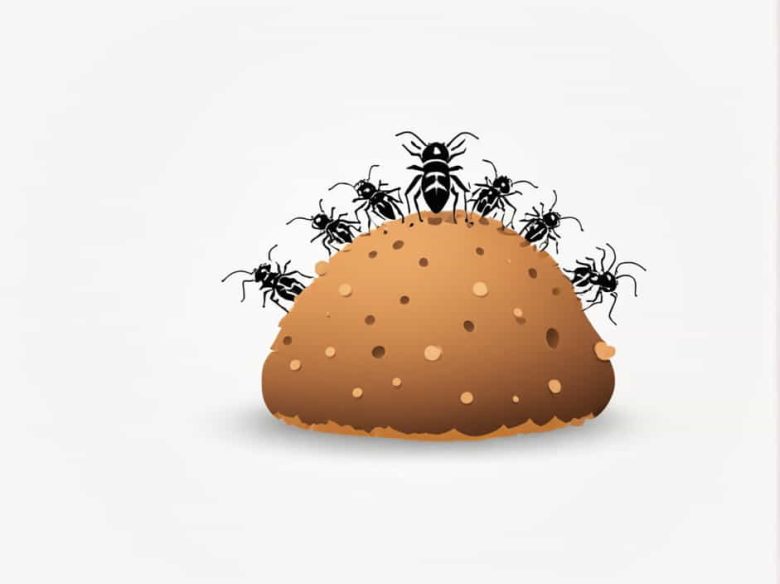Ants are among the most fascinating insects on Earth. They live in large organized colonies and build underground structures known as anthills. But how many ants actually live in an anthill? The answer depends on several factors including the ant species colony age and environmental conditions.
In this topic we’ll explore the population size of an anthill the factors that affect colony size and the roles of different ants within the colony.
What Is an Anthill?
An anthill is a mound of soil sand or plant material built by ants as part of their underground nest. While the visible mound is small the actual colony extends deep underground creating a complex system of tunnels and chambers.
Why Do Ants Build Anthills?
- Protection from predators and harsh weather
- Temperature regulation for eggs and larvae
- Storage space for food supplies
- Nesting area for the queen and worker ants
How Many Ants Live in an Anthill?
The number of ants in an anthill varies depending on the species and colony maturity. Here’s an estimate based on common ant species:
| Ant Species | Estimated Colony Size |
|---|---|
| Fire Ants (Solenopsis invicta) | 100000 – 250000 |
| Carpenter Ants (Camponotus) | 10000 – 50000 |
| Argentine Ants (Linepithema humile) | 100000 – 500000 |
| Leafcutter Ants (Atta) | 1 million+ |
| Pharaoh Ants (Monomorium pharaonis) | 300000 – 500000 |
Factors That Affect the Number of Ants in an Anthill
Several factors determine how many ants live in a single anthill:
1. Ant Species
Different species have different colony sizes. Some like fire ants have colonies of around 100000 individuals while leafcutter ants can reach millions.
2. Colony Age
Young colonies start with a few hundred ants but as the queen lays more eggs the population can grow exponentially over time.
3. Availability of Food
A colony in a food-rich environment will grow faster and sustain a larger population compared to one in an area with limited resources.
4. Presence of Multiple Queens
Some ant species have multiple queens in one colony leading to larger populations compared to species with only one queen per anthill.
5. Environmental Conditions
Temperature humidity and seasonal changes influence the survival and reproduction rate of ants within the anthill.
Roles of Ants Inside an Anthill
Each ant in the colony has a specific role which helps the anthill function efficiently. The three main castes in an ant colony are:
1. The Queen Ant
- The largest ant in the colony
- Solely responsible for laying eggs
- Can live for several years sometimes decades
2. Worker Ants
- The most numerous ants in an anthill
- All female but cannot reproduce
- Responsible for foraging feeding the queen and larvae and defending the nest
3. Male Ants (Drones)
- Their only purpose is to mate with the queen
- Die soon after mating
How Do Ants Expand Their Anthill?
As the population increases worker ants excavate more tunnels and expand the anthill to accommodate the growing colony. Some ants may even establish satellite nests nearby.
1. Tunnel and Chamber Construction
Worker ants continuously dig new tunnels and chambers for:
- Storing food
- Protecting the queen’s eggs
- Housing worker ants
2. Colony Splitting (Budding)
Some ant species expand by creating new satellite nests which remain connected to the main colony. This method allows the colony to spread over large areas.
How Long Does an Anthill Last?
The lifespan of an anthill depends on various factors including species environment and human intervention. Some colonies can exist for decades while others last only a few years.
Factors That Determine Anthill Longevity:
- Predators and environmental threats (flooding drought fire)
- Availability of food
- Human activities (pesticides construction)
Largest Ant Colonies in the World
Some ant species form supercolonies which are massive networks of connected anthills.
1. Argentine Ant Supercolony (Europe)
- Extends over 6000 km (3700 miles) across Southern Europe
- One of the largest cooperative ant colonies ever recorded
2. Japanese Ant Supercolony
- Over 300 nests interconnected
- Millions of ants working together as a single unit
The number of ants in an anthill varies significantly based on the species colony age food availability and environmental conditions. Some anthills house a few thousand ants while larger colonies can reach millions.
Understanding the complexity of ant colonies reveals how these tiny insects work together expand their nests and survive in diverse environments. The next time you see an anthill remember—it’s not just a mound of dirt but a highly organized underground city filled with thousands of hardworking ants!



